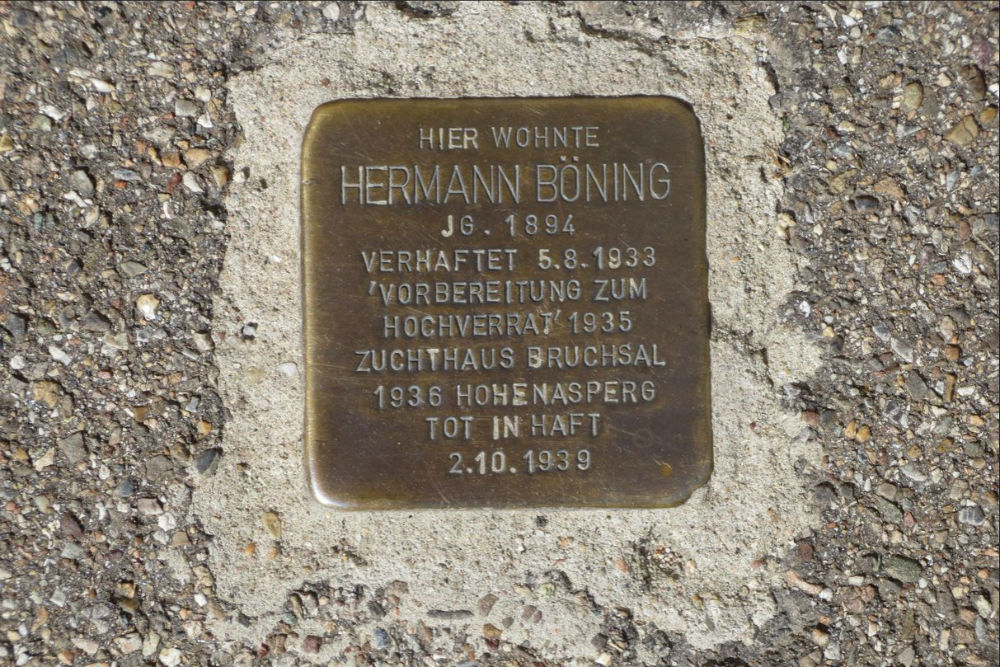Stumbling Stone Kaiserstraße 42
This Stolperstein / Stumbling Stone commemorates:
* Hermann Böning, born 1894, arrested 5 August 1933, "preparation for high treason" 1935, Bruchsal Penitentary, 1936 Hohenaspberg [prison], died in custody 2 October 1939.
Hermann Böning served in World War I. Afterwards, he worked for the National Railways as a locomotive engineer/driver. He became active in the communist party (Kommunistische Partei Deutschlands - KPD) and was arrested several times for violations such as participating in banned demonstrations. He was a KPD representative in the Baden State Parliament from 1929-1933. Then, in 1933, the communist party was banned. He continued to be active in organizing resistance against Nazism and was arrested at a meeting.
Just 30 days before his scheduled release from prison, he died of a skull fracture, officially, due to a road accident: a vehicle towing a trailer holding Hermann Böning and others was speeding downhill and the trailer hit a wall, throwing out the prisoners.
Another stolperstein for Hermann Böning is in Karlsruhe, on Ständehausstraße 2. Stolpersteine were installed there in November 2013 for 11 members of the Baden State Parliament, representing political parties which were made illegal in 1933.
For more information and pictures, please visit Initiative Heidelberger Stolpersteine: Hermann Böning (in German).
"Stolpersteine" is an art project for Europe by Gunter Demnig to commemorate victims of National Socialism (Nazism). Stolpersteine (stumbling stones) are small, 10x10cm brass plaques placed in the pavement in front of the last voluntary residence of (mostly Jewish) victims who were murdered by the Nazis. Each plaque is engraved with the victim’s name, date of birth and place (mostly a concentration camp) and date of death. By doing this, Gunter Demnig gives an individual memorial to each victim. One stone, one name, one person. He cites the Talmud: "A human being is forgotten only when his or her name is forgotten."
Do you have more information about this location? Inform us!
Source
- Text: Fedor de Vries & Anne Palmer
- Photos: Wikimedia Commons
- Initiative Heidelberger Stolpersteine: Hermann Böning
- Stolpersteine.eu
Nearby
Point of interest
Monument
- Bust of Bismarck - Heidelberg
- Franco-Prussian War Memorial Heidelberg - Heidelberg
- Memorial Alfred Mombert - Heidelberg





